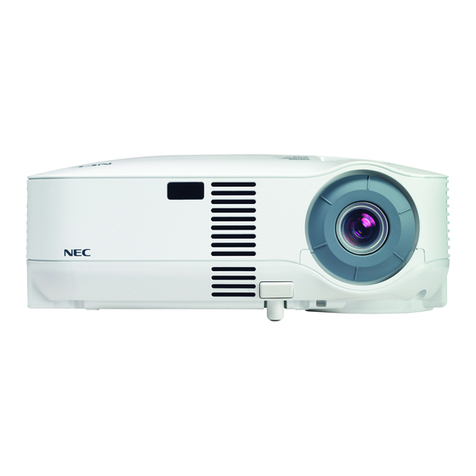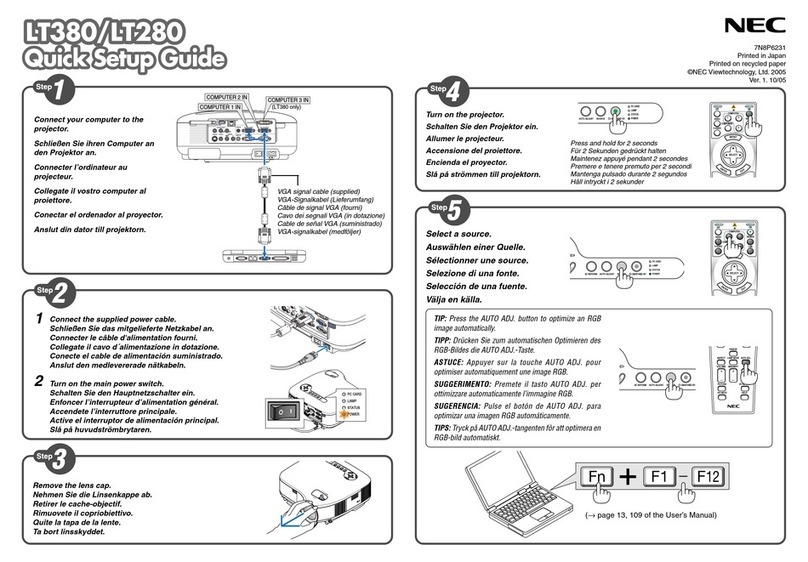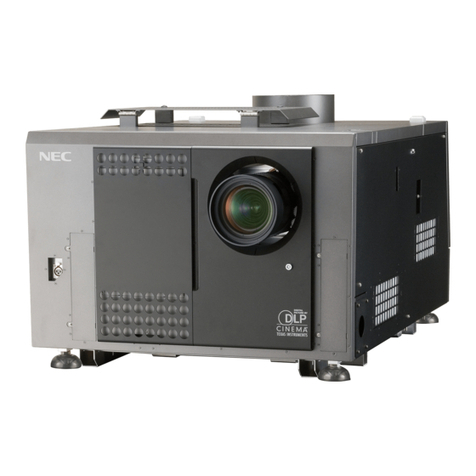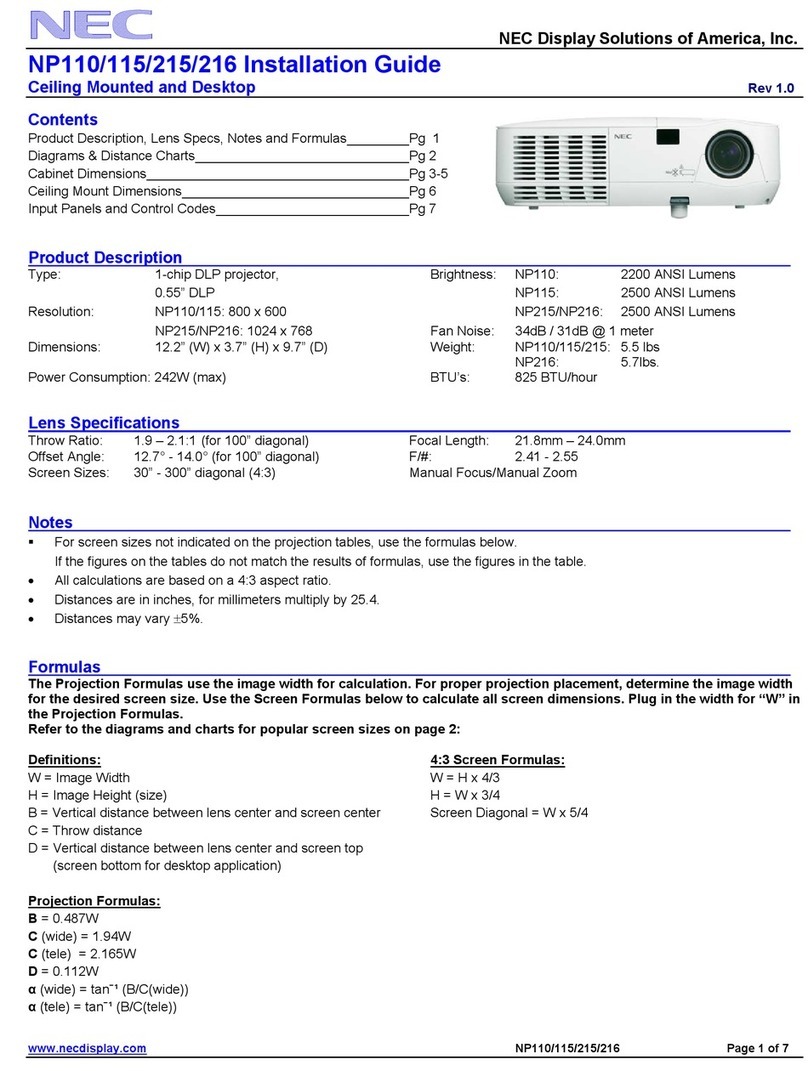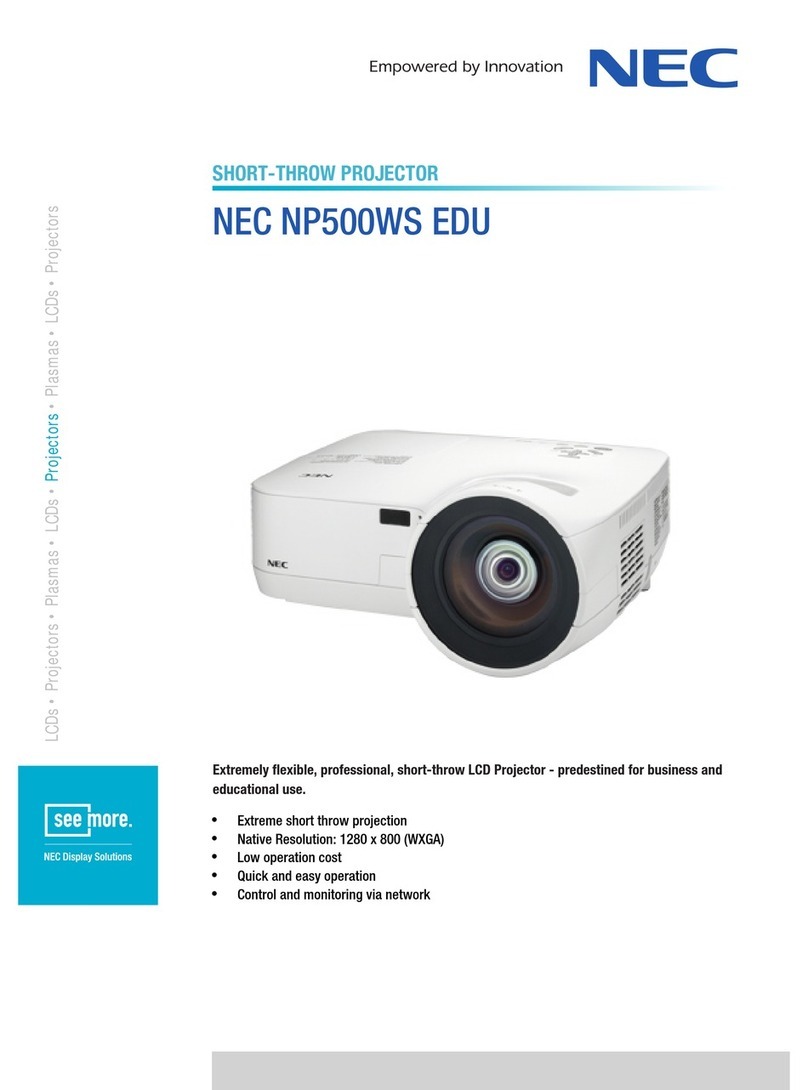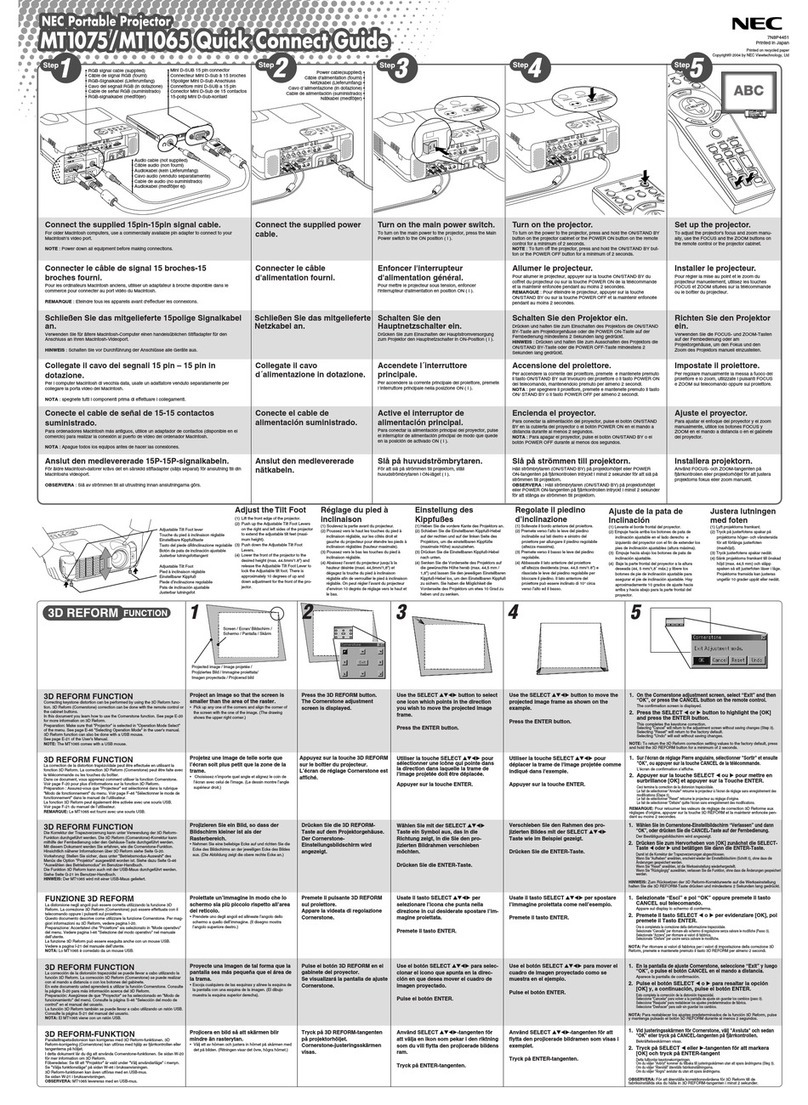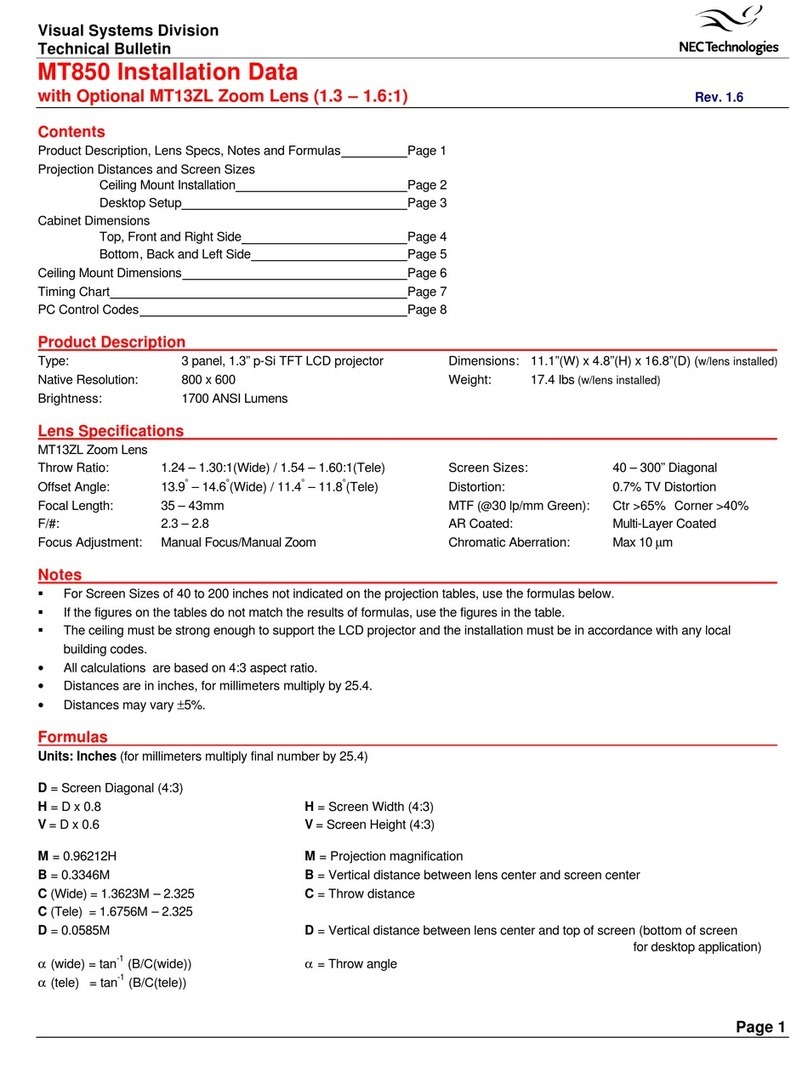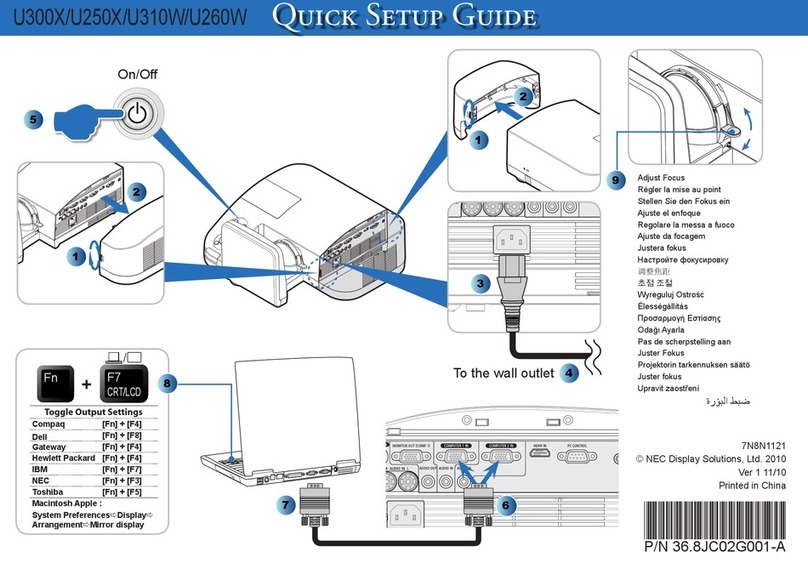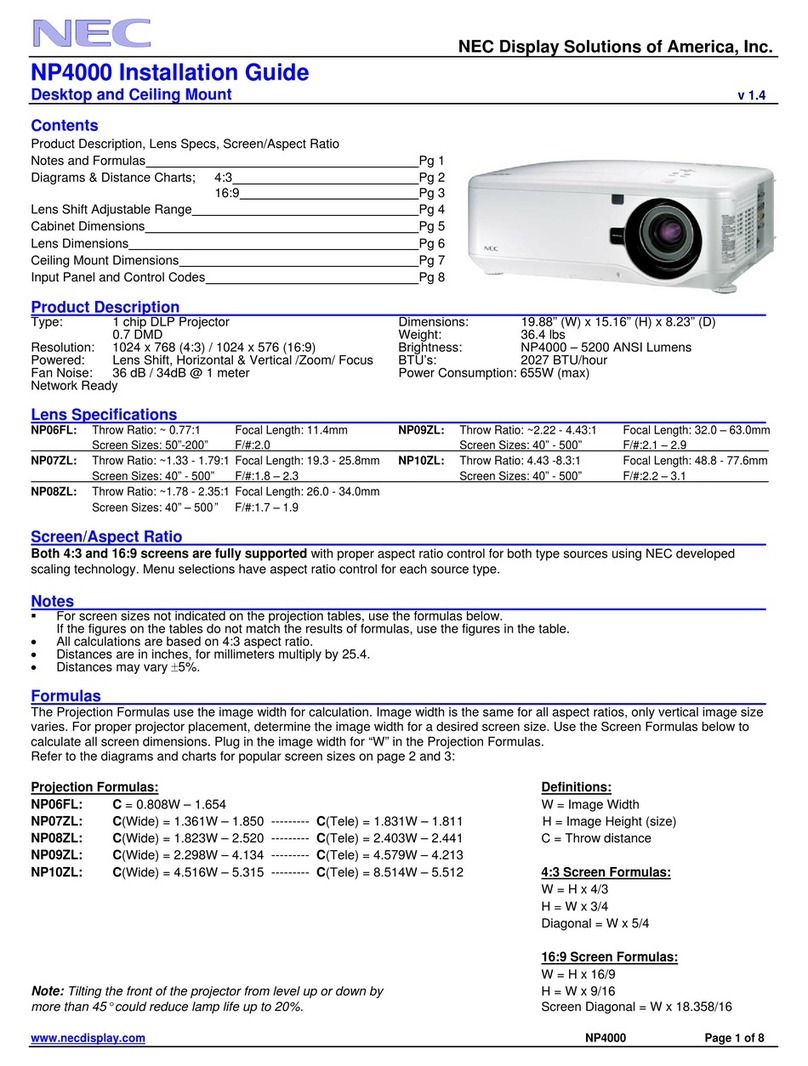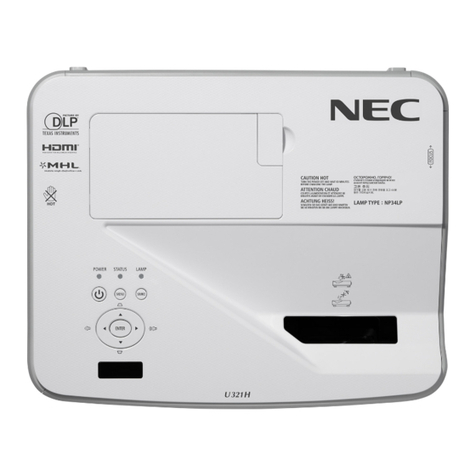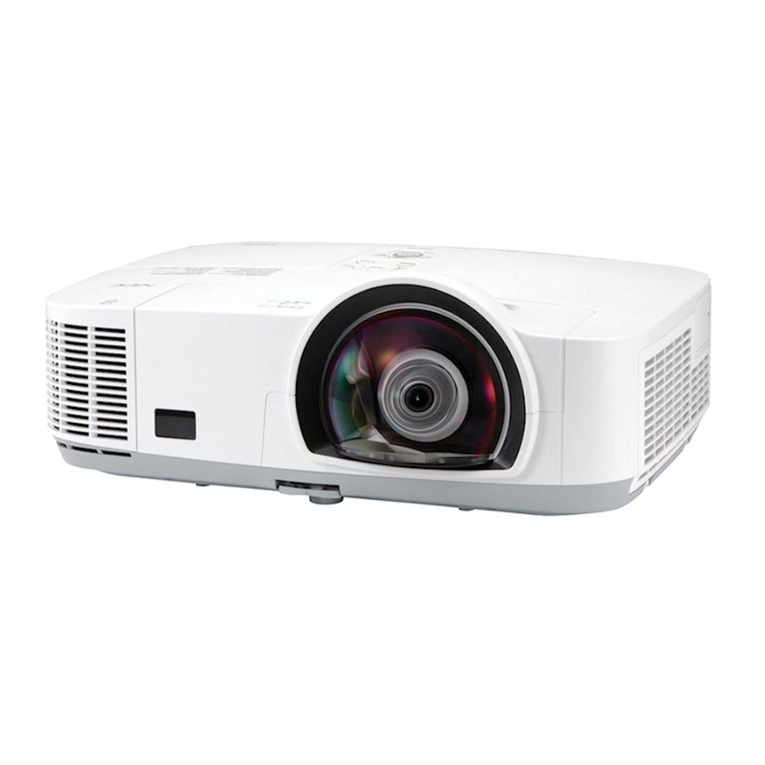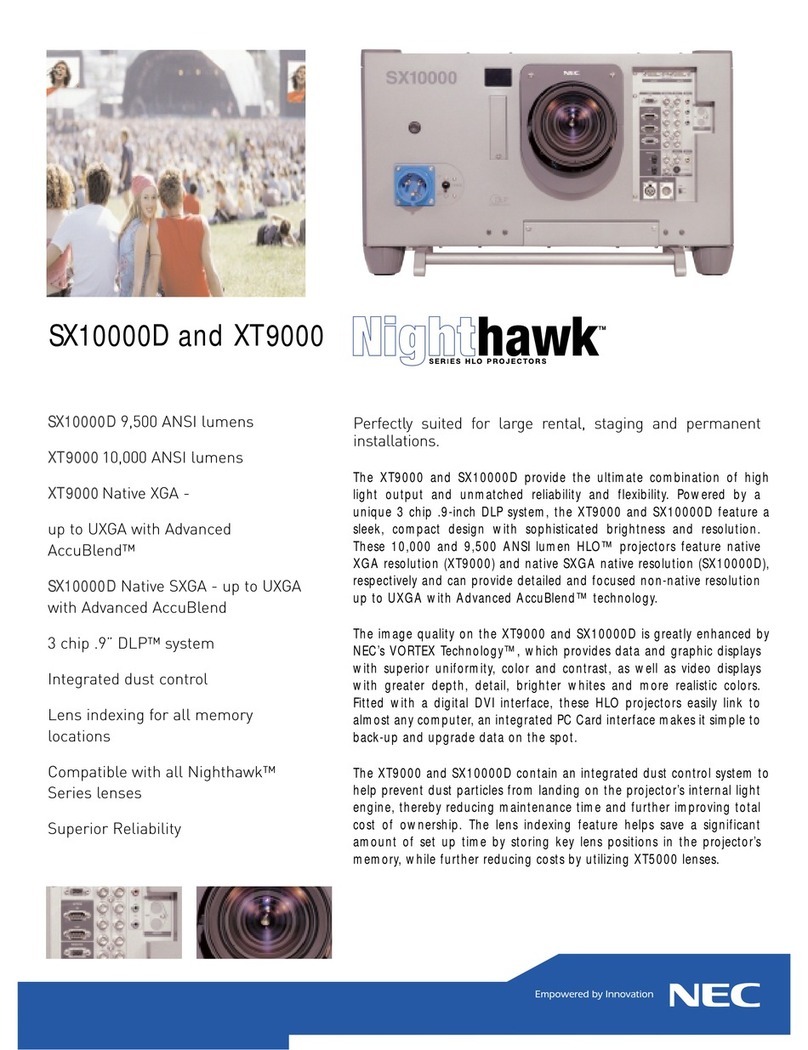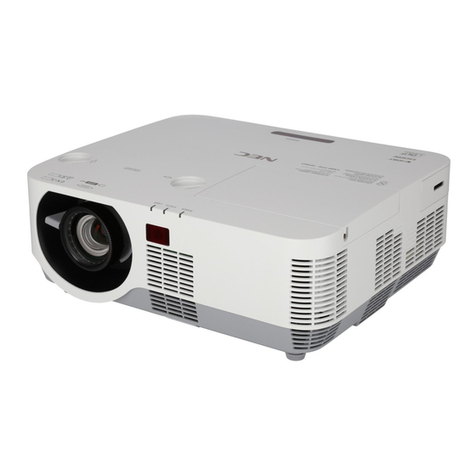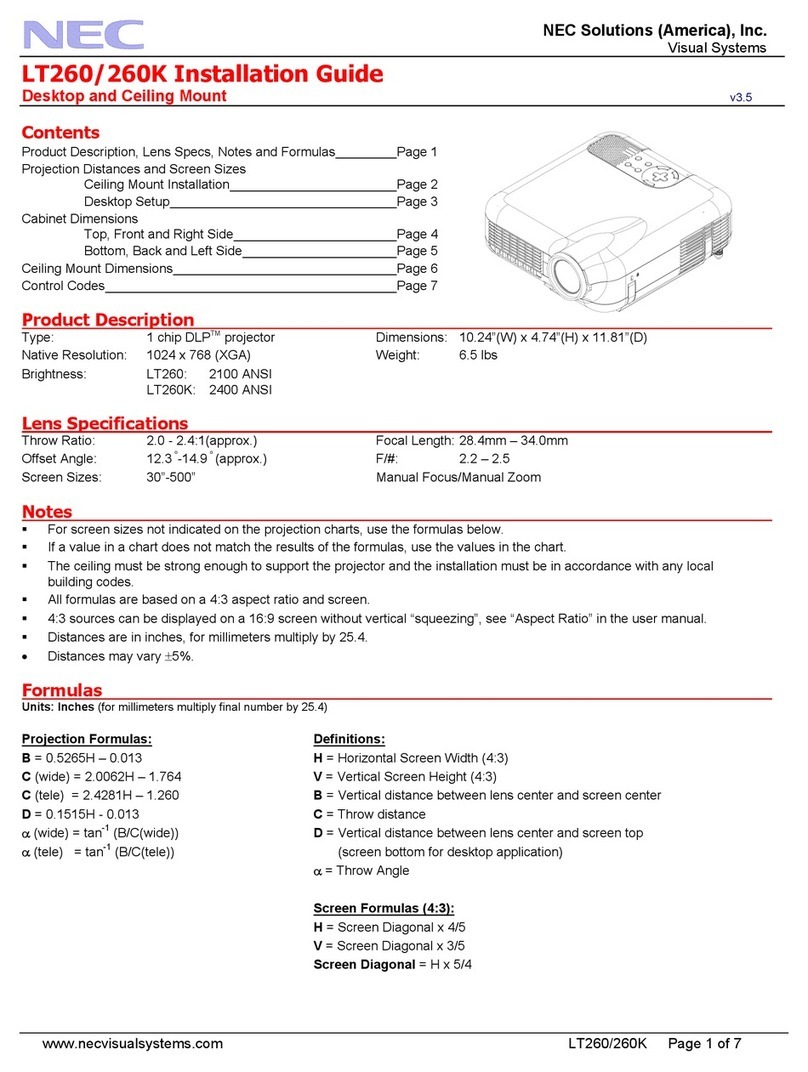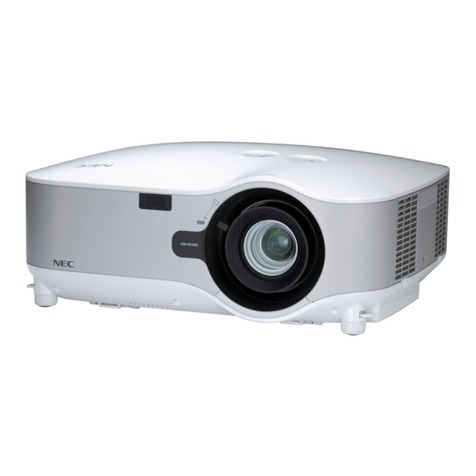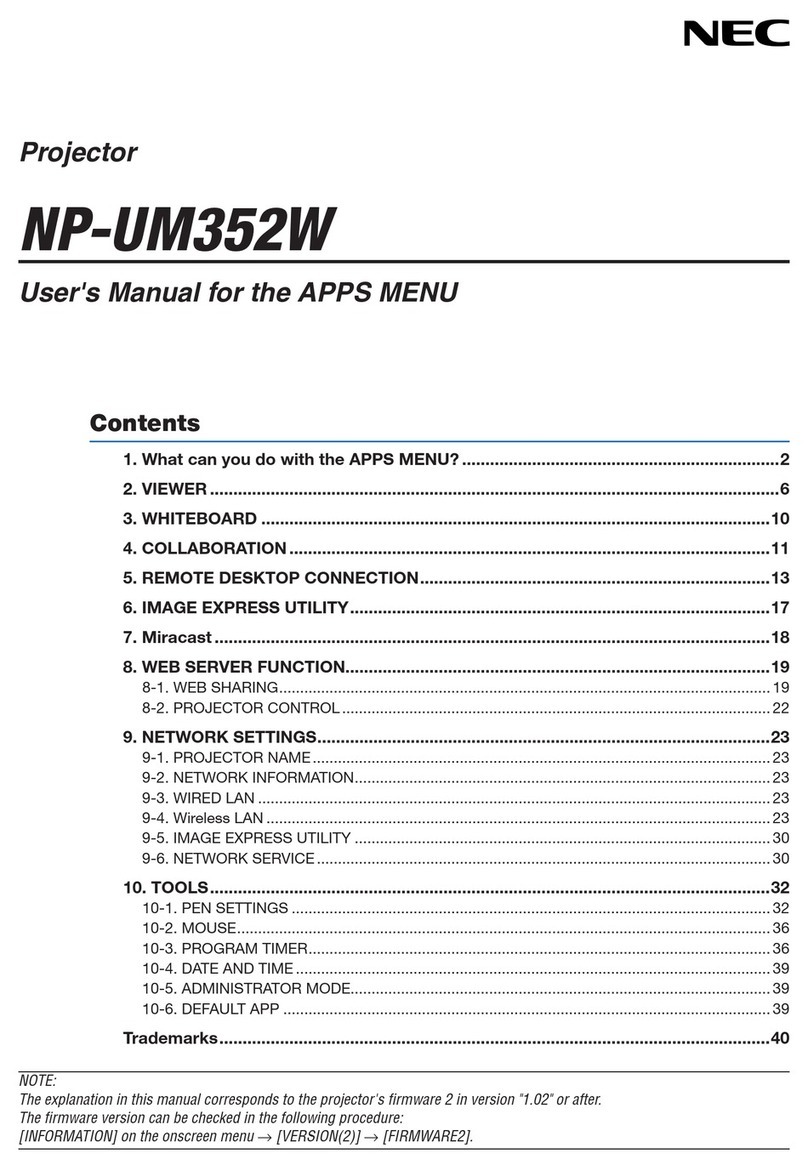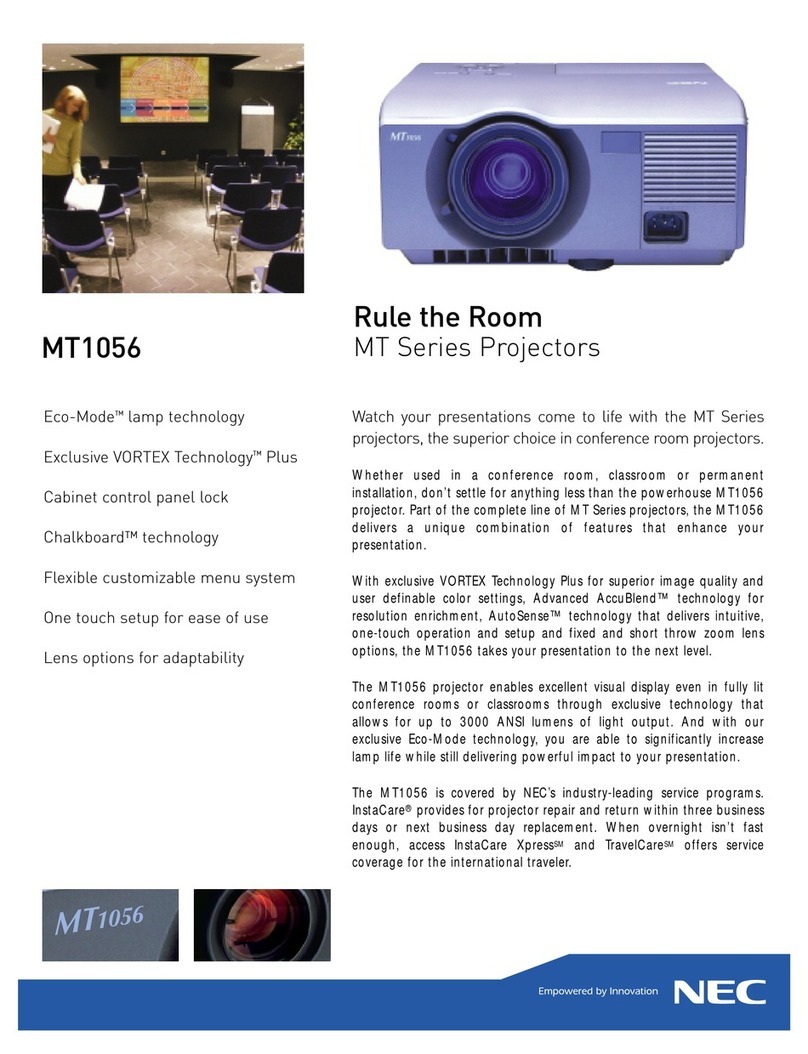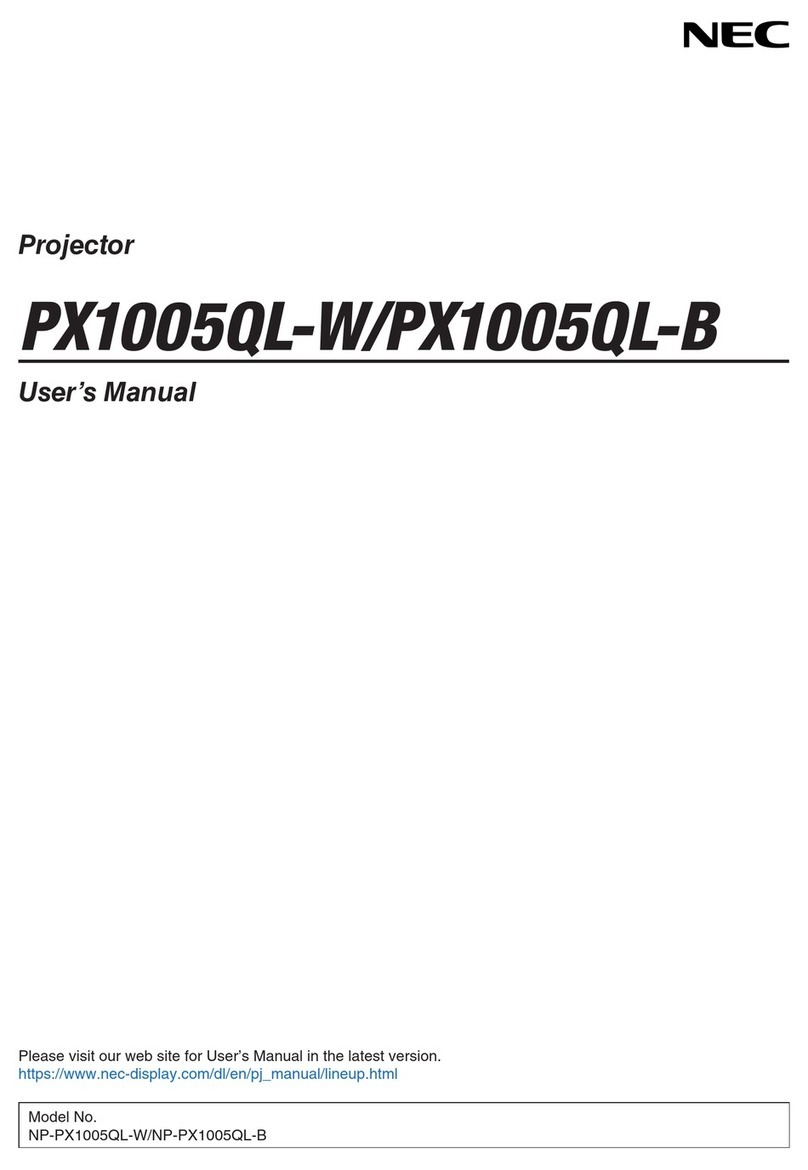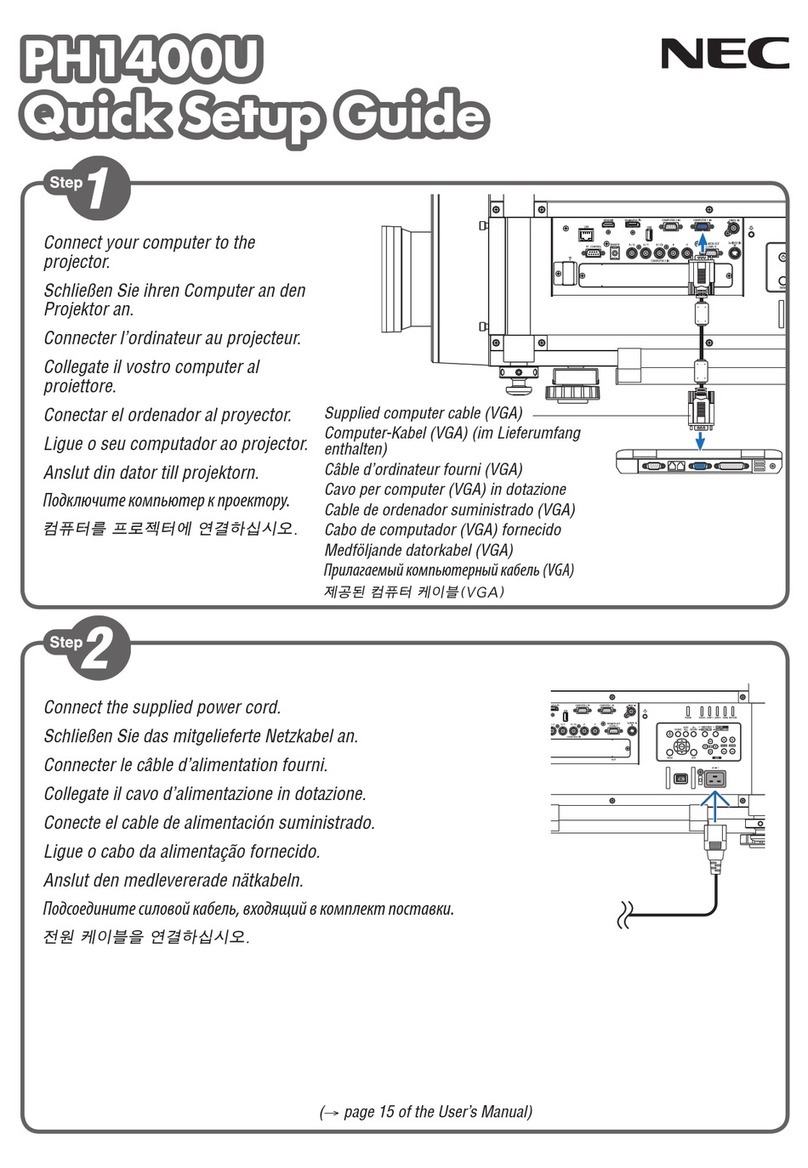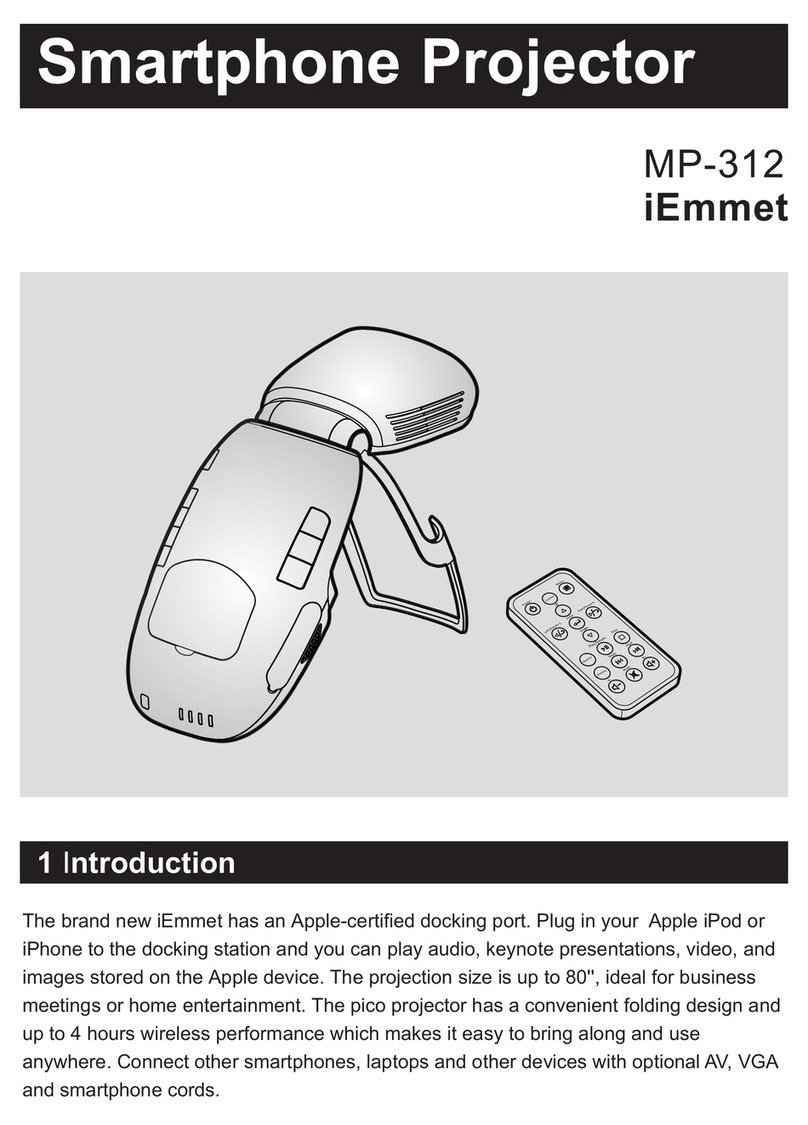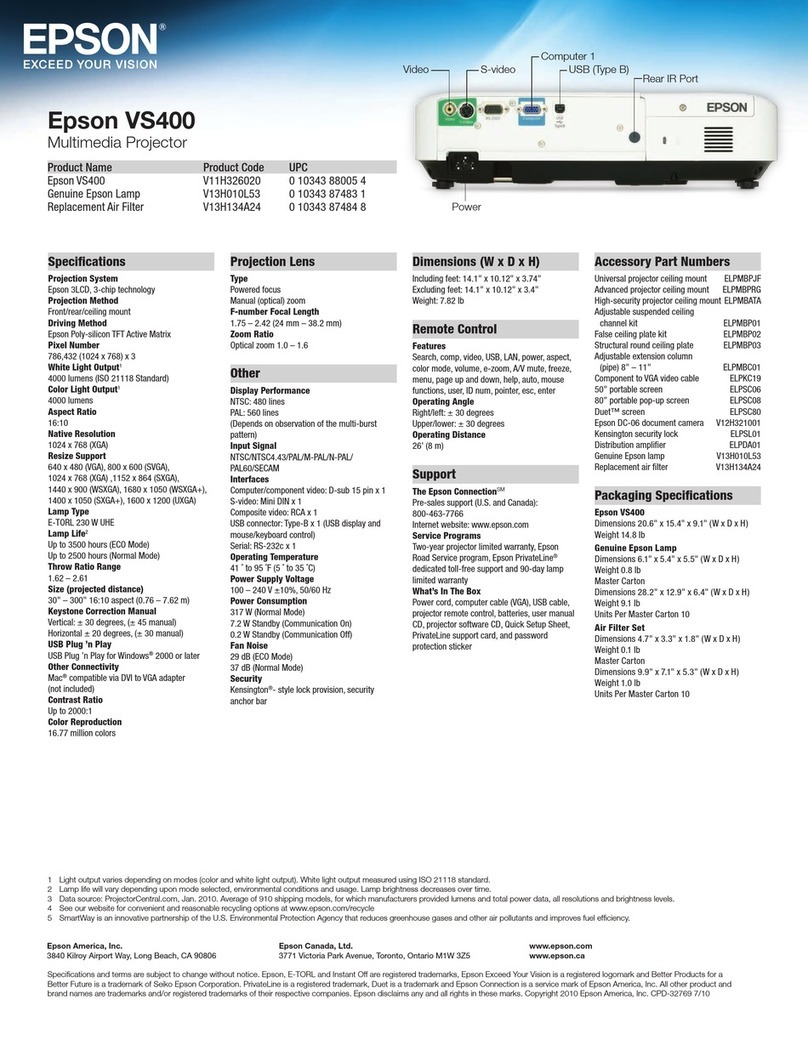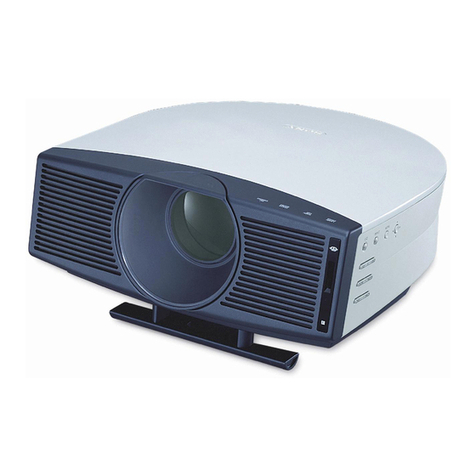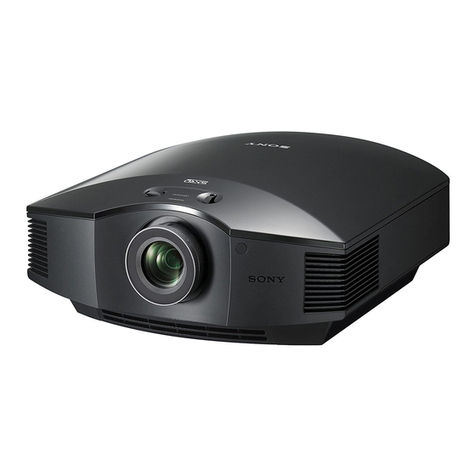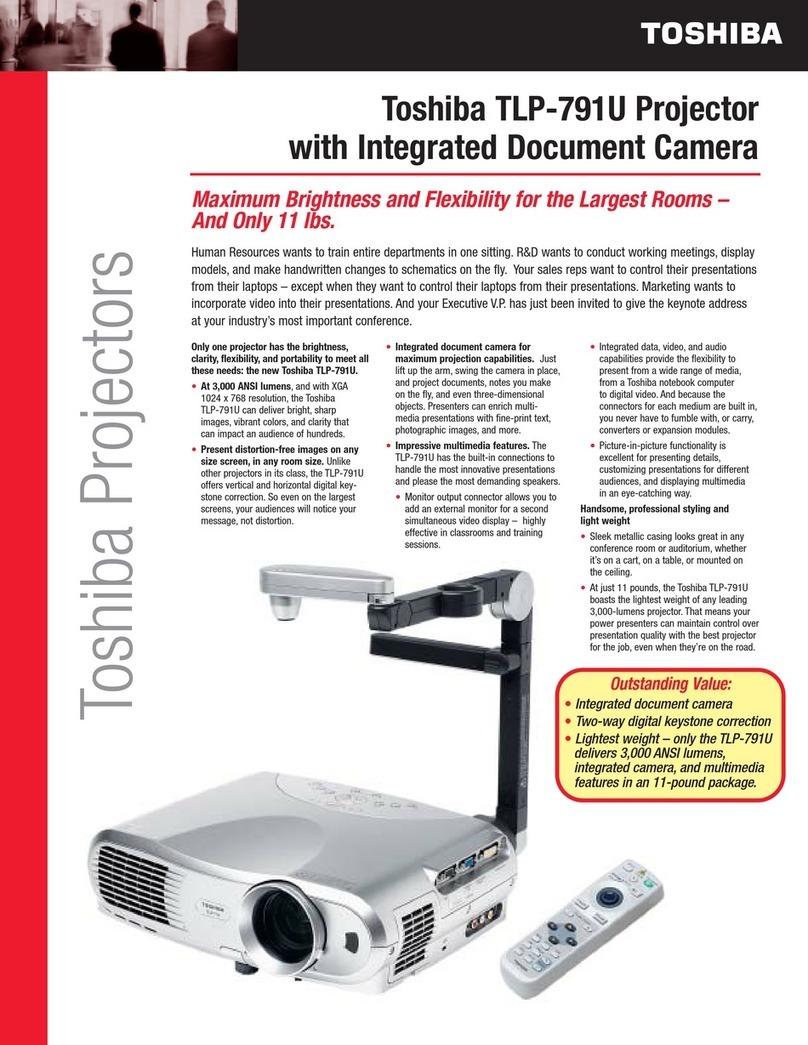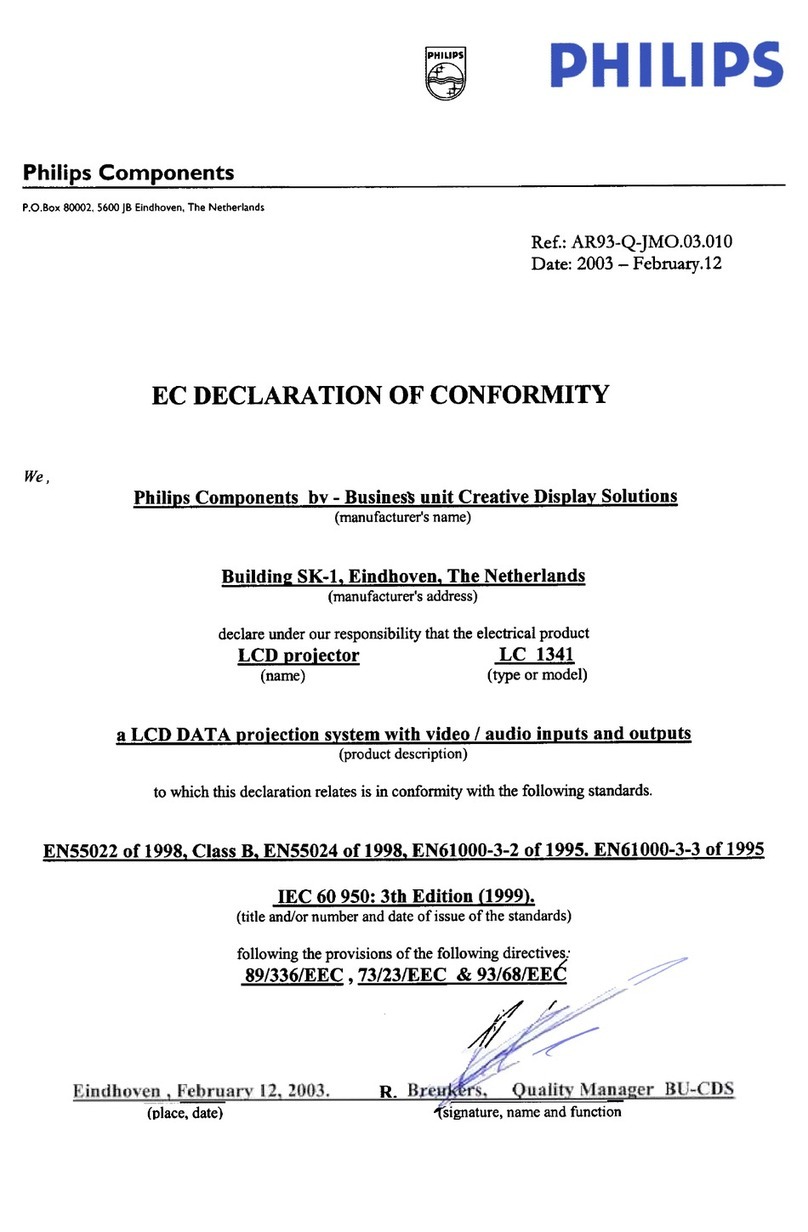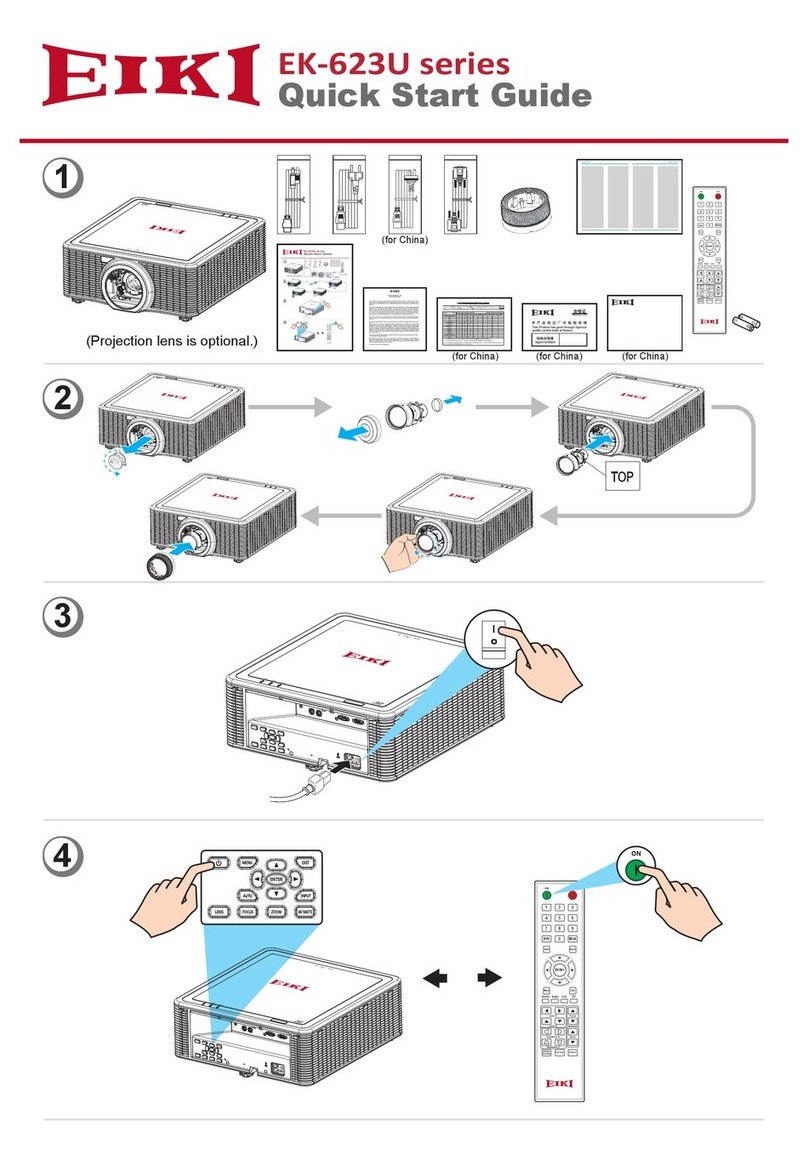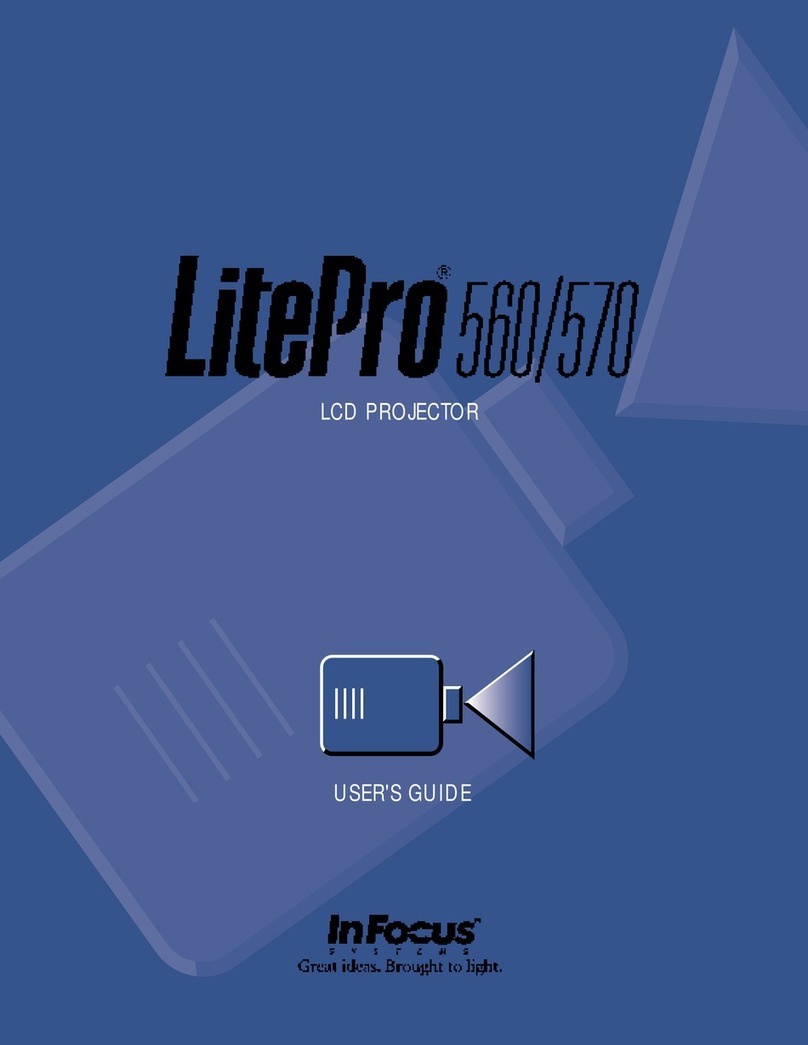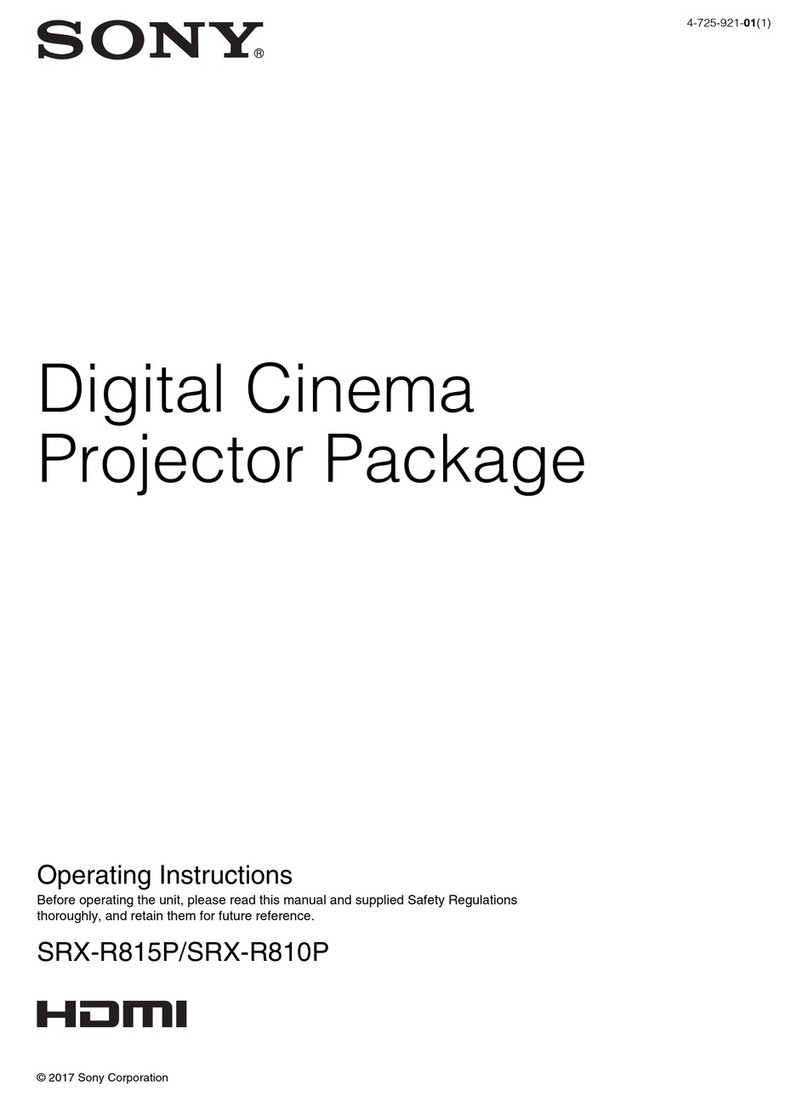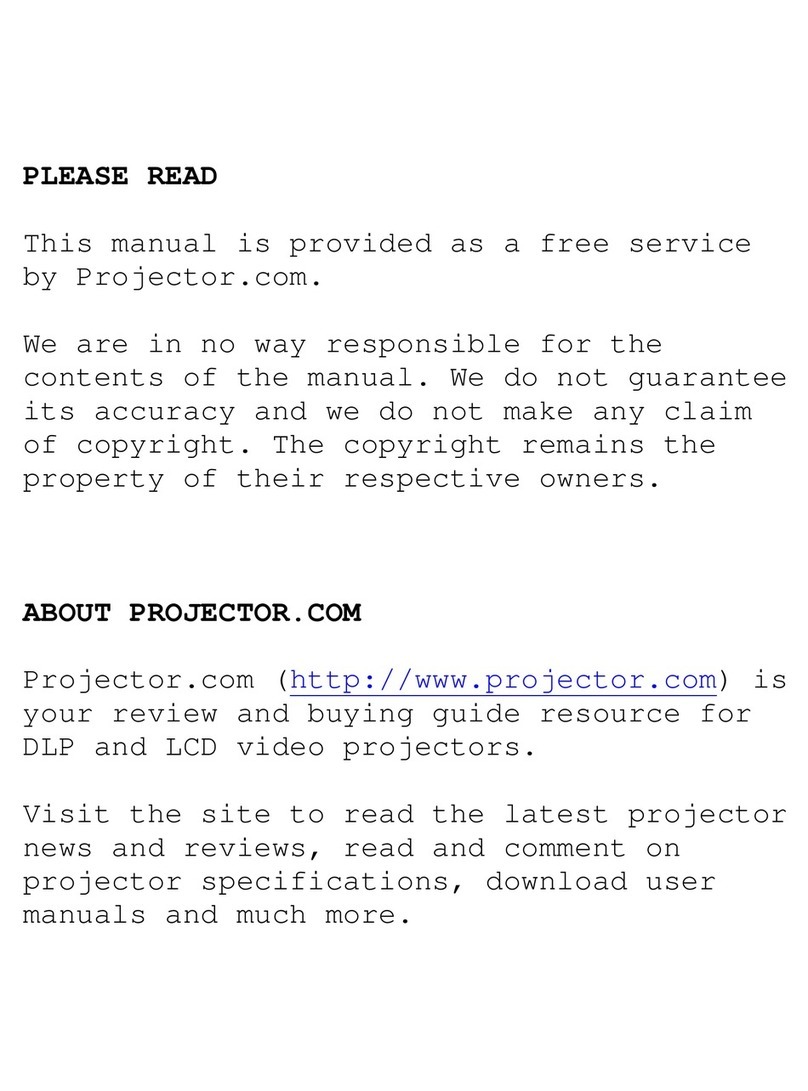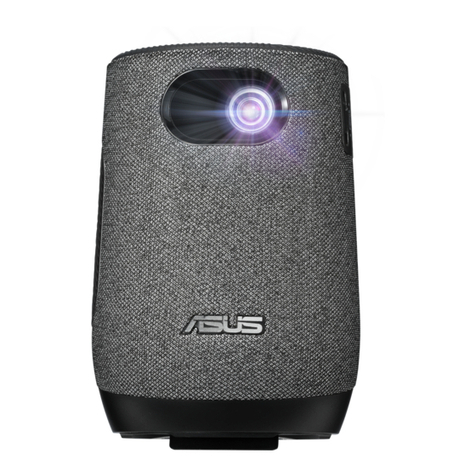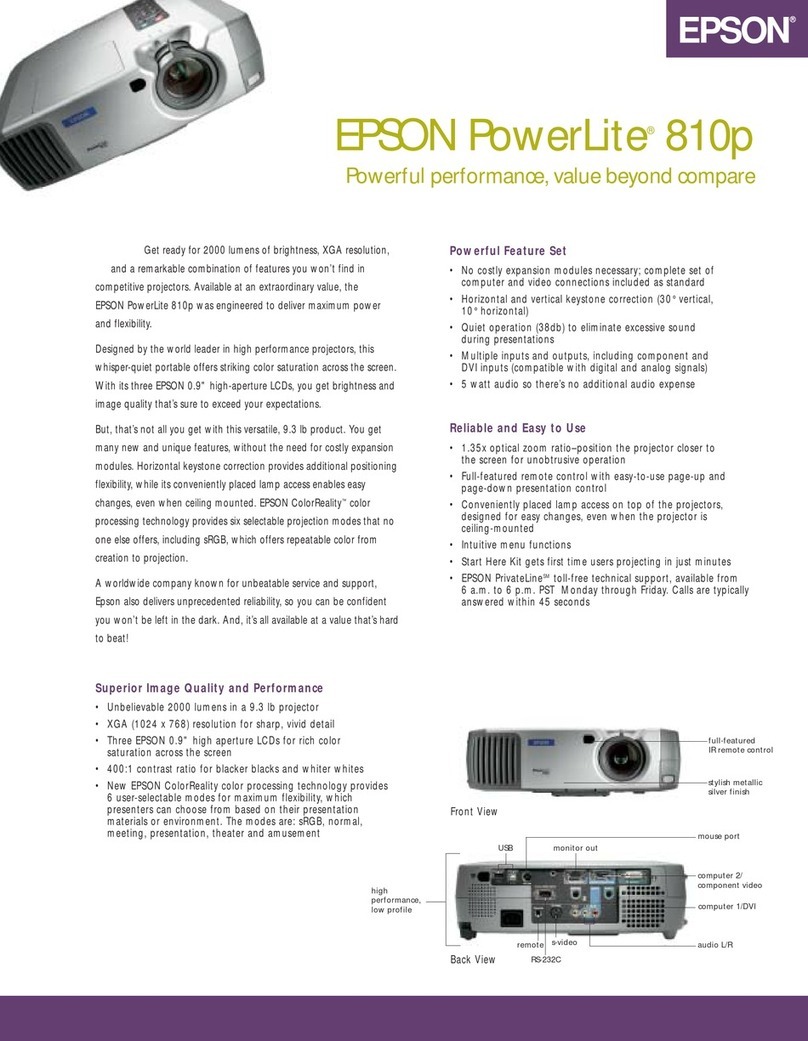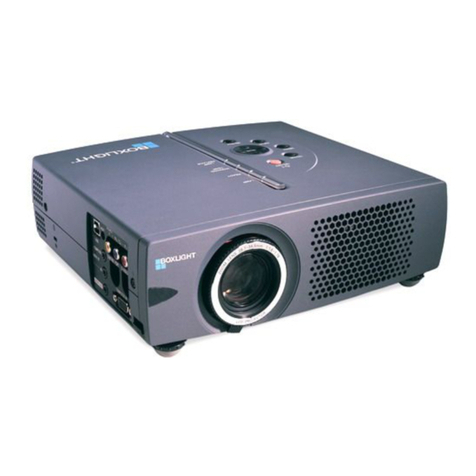NC800C Important Information
E-3
2. Do not place the projector in direct
sunlight, near heaters or heat radiating
appliances.
3. Exposure to direct sunlight, smoke
or steam could harm internal components.
4. Handle your projector carefully.
Dropping or jarring your projector
could damage internal components.
5. To carry the projector, a minimum
of four persons are required. Do
not hold the lens part and the
anamorphic lens part with your
hand. Otherwise the projector may
tumble or drop, causing personal
injury.
6. Do not place heavy objects on top
of the projector.
7. If you wish to have the projector
installed on the ceiling:
a Do not attempt to install the
projector yourself.
b The projector must be installed
by qualified technicians in order
to
ensure proper operation and
reduce the risk of bodily injury.
c In addition, the ceiling must be
strong enough to support the
projector and the installation
must be in accordance with
any local building codes.
d Please consult your dealer for
more information.
e
Do not attempt to stack projectors
on the ceiling.
Power Supply
1. The projector is so designed that it
operates with the power supply voltage
described below.
•1.2kW (Max. 12A) AC100-120V
50/60Hz
•1.7kW (Max. 8.5A) AC200-240V
50/60Hz
Ensure that your power supply fits
this requirement before attempting
to use your projector.
2. Consult your dealer about installing
the power cord to the projector.
DO NOT install the power cord by
yourself.
Doing so may cause a fire
or electric shock.
3.
Handle the power cord carefully and
avoid excessive bending. Do not place
any heavy objects on the power cord. A
damaged cord can cause electric shock
or fire.
4. If the projector will not be used for
an extended period of time, shut down
AC power.
5.
Placing the power cord and the signal
cable closely to each other can cause
beat noise. Beat noise is corruption of
the picture often seen as a rolling
band moving through the image.
Keep the two separated, to ensure
beat noise is not generated.
6. Do not touch the projector during a
thunder storm. Doing so can cause
electrical shock or fire.
Cleaning
1.
Unplug the projector before cleaning.
2. Clean the cabinet periodically with
a damp cloth. If heavily soiled, use
a mild detergent. Never use strong
detergents or solvents such as alcohol
or thinner.
3. Use a blower or lens paper to clean
the lens, and be careful not to scratch
or mar the lens.
Fire and Shock Precautions
1.
Ensure that there is sufficient ventilation
and that vents are unobstructed to
prevent potentially dangerous concentrations
of ozone and the build-up of heat
inside your projector. Allow at least
8 inches (20cm) of space between
your projector and a wall. Connect
the projector exhaust outlet with the
exhaust equipment having a capacity of
16m3/min or more.
2.
Prevent foreign objects such as paper
clips and bits of paper from falling
into your projector. Do not attempt
to retrieve any objects that might fall
into your projector. Do not insert any
metal objects such as a wire or
screwdriver into your projector. If
something should fall into your
projector, disconnect
it immediately
and have the object
removed by a

